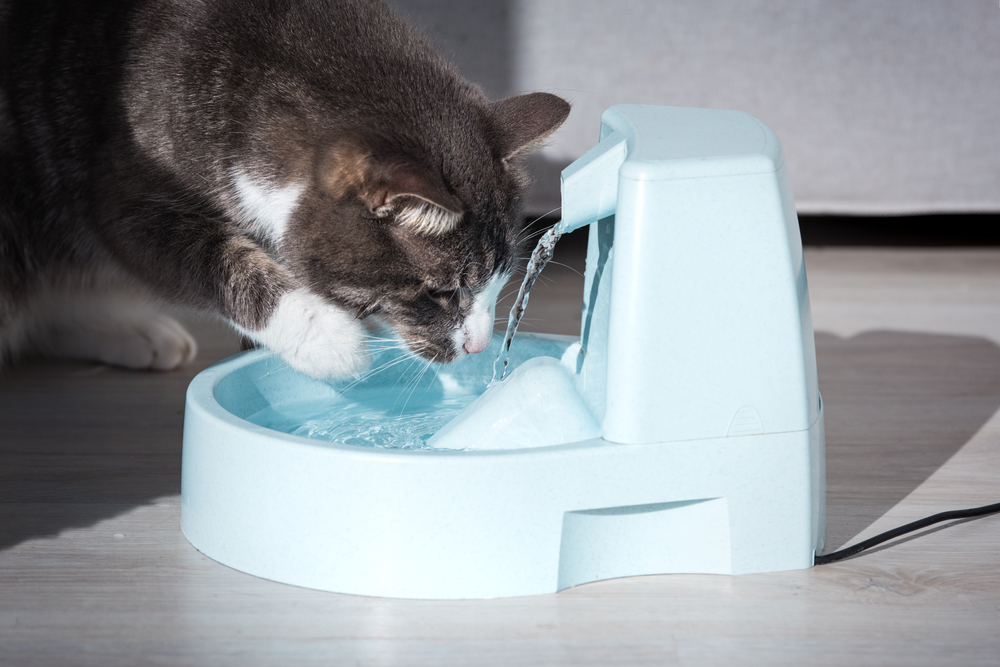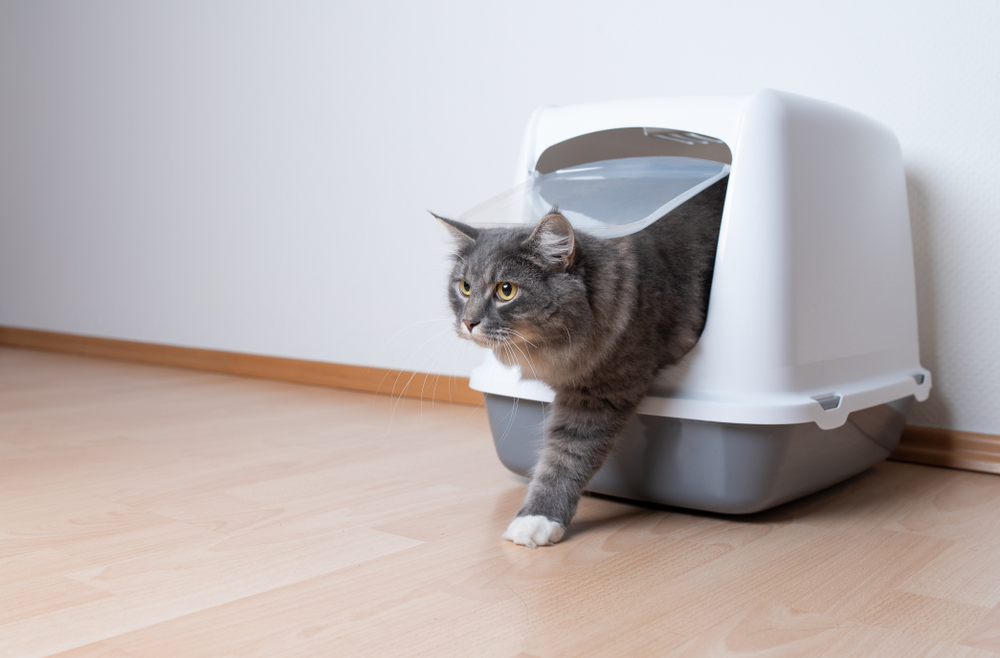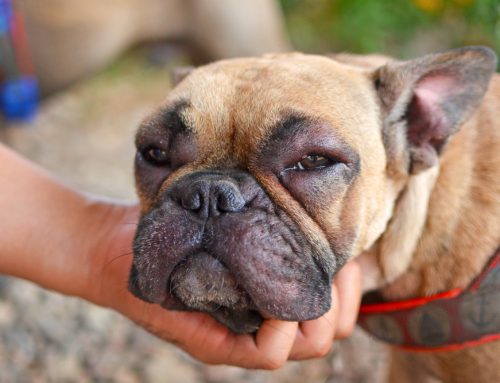One of the most common complaints heard from cat owners is that their pet is urinating inappropriately. Unfortunately, cats can develop a wide variety of urinary tract issues that lead them to seek other elimination spots, or to experience problems while urinating. The multitude of urinary issues that develop in the lower urinary tract (i.e., the bladder and urethra) are termed feline lower urinary tract disease (FLUTD).
What are feline lower urinary tract disease signs?
Since FLUTD encompasses many urinary problems that appear similarly, differentiating between them based on signs alone can be difficult. Common FLUTD signs include:
- More frequent urination
- Small amounts of urine
- Blood in the urine
- Inappropriate urination outside the litter box
- Painful urination shown by meowing, crying, or yowling
- Straining to urinate
Oftentimes, cat owners confuse straining to urinate with constipation, as the two issues can appear similar. However, straining to urinate—and producing little or no urine—is an emergency situation that needs immediate treatment, whereas constipation is usually not life-threatening.
Are some cats at an increased risk for feline lower urinary tract disease?
Certain factors seem to predispose cats to FLUTD, although any cat at any age can be afflicted. Most frequently, FLUTD is seen in cats who:
- Are middle-aged
- Are overweight
- Receive little exercise
- Have limited outdoor access
- Drink less water
- Have a stressful home life or environment
Additionally, male cats seem to be an increased risk, largely due to their anatomy. Their longer, narrower urethra can be the cause of many urinary issues.
What are common disorders that cause lower urinary tract signs in cats?
Many urinary issues fall under the FLUTD umbrella, but cats most commonly experience idiopathic cystitis, urolithiasis, and urethral obstruction.
- Feline idiopathic cystitis — Feline idiopathic cystitis (FIC) is the most common diagnosis made for cats with lower urinary tract signs. When no other disease process, such as infection, stone, obstruction, or cancer, can be found, FIC is diagnosed through the process of elimination. Idiopathic means “of unknown cause,” and cystitis refers to bladder inflammation. The inflammation causes cats to try frequently to urinate, and the small amounts of urine typically contain blood. Stress and inadequate environmental enrichment seem to induce FIC. Signs generally resolve on their own after a couple of weeks, but often recur, especially if the cat’s stress is not reduced and their environment is not made more fulfilling.
- Urolithiasis — Uroliths, or urinary stones, can also cause urinary issues in cats. Minerals can congregate and form stones that irritate or obstruct the bladder or urethra, making urination difficult and painful. In some cases, a prescription diet can dissolve uroliths and prevent new formations, but certain stone types do not dissolve and require surgical removal. Cats who have developed uroliths are at a high risk for recurrence, so lifelong prescription food is often necessary to prevent new stone formation.
- Urethral obstruction — While the inflammation involved in many urinary issues is often painful for cats, most problems are not life-threatening. However, a urethral obstruction can be life-threatening and, without immediate treatment, can cause death 24 to 48 hours after blockage formation. The urethra (i.e., the thin, narrow tube that connects to the bladder) can become blocked with uroliths or urethral plugs, which are composed of mucus, cells, and minerals. Tumors and anatomical abnormalities can also cause a urethral obstruction.
Once the urethra becomes blocked, urine builds up, the kidneys can no longer filter toxins from the blood, and electrolyte levels become unbalanced, which ultimately proves fatal for cats.
Treating a urethral blockage requires passing a urinary catheter and flushing out the obstruction. Intravenous fluid therapy, antibiotics, anti-inflammatories, and antispasmodic medications may all be necessary to help a cat recover from an obstruction. In severe cases, the narrow portion of the urethra is removed to prevent recurrence, but this surgery is generally considered a last resort.
Can feline lower urinary tract disease be prevented?

Unfortunately, cats who develop FLUTD are more likely to experience recurrence, but their chances can be minimized. You can also help prevent FLUTD in the first place by:
- Providing a fresh-flowing drinking fountain to encourage your cat to drink
- Keeping your cat at a healthy weight
- Offering several litter boxes that are kept clean
- Providing plenty of environmental enrichment, including toys, scratching surfaces, climbing posts, and hiding spots
- Maintaining a regular schedule and avoiding major life and environment changes
- Playing and exercising several times a day
If your cat seems to be having urinary issues, such as urinating more frequently and in smaller amounts, seek veterinary treatment immediately. Contact our All Creatures Animal Hospital team for an appointment.














Leave A Comment